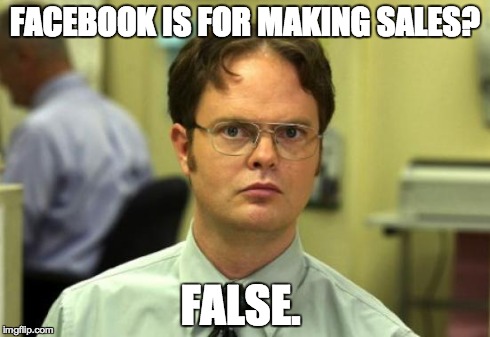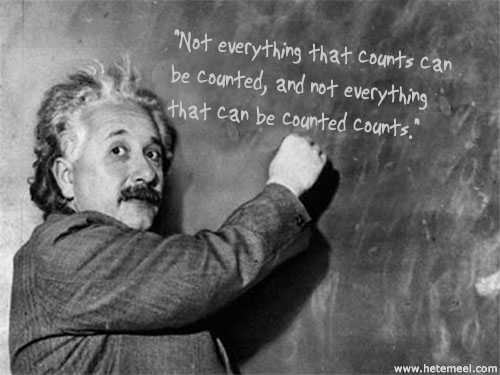What is the ROI of Social Media?
As more marketers have integrated social media strategies into their annual budgets and marketing plans, the question of how to quantify these efforts and prove that they’re working has become ever more important to answer. We want to know that the time and money we’re dumping into the social sphere is coming back to us somehow. Does Facebook lead to sales? Is my Twitter account driving in-store traffic?
Let’s start with some perspective.
Only a few short years ago, the best hope most brands had to reach their prospective audiences was to dump large sums of money into radio, TV or print buys and just try to reach as many interested people as possible. Audience measurement was based mostly on print circulations or Nielsen reporting — which relies largely on estimations and consumer surveys — and one of the best ways to measure the effectiveness of your ad was to track any loose correlation between your advertising dollars and your sales revenue. If you were having a good sales year and you were also spending a lot on ads, then they must have been working.
Since then a lot has changed. Now that advertisers have shifted their focuses and their budgets to the digital world, everything can be tracked and measured. And as a result, everything should be tracked and measured… or so we say. For decades we went about spending millions of dollars to buy up impressions and reap the benefits of branding, but now that we can measure how much of that money is coming directly back to us, marketing has turned into a numbers game. The concern has shifted to which channels are providing positive ROI and which aren’t. The ones that do are quickly eating budget from those that don’t.
Somewhere, swept up in this chaotic marketing landscape, is the story of social media.
Social media is one of the few digital channels that quite often does not have hugely trackable effects on your bottom line. But if you stop reading right there, you’re missing the main point.
Social media does have hugely positive effects, and it does impact your bottom line.
You just have to understand how to use it.
Social Media is Not a Salesman
One of the biggest mistakes you can make on social media is to assume that your social channels should act just like your website. For the most part, your website is a tool that behaves like an always-on salesman, distributing information about your products and services to potential customers and converting viewers into leads for your business. In certain isolated situations, you can use your social media pages as sales tools, but 90% of the time, that’s not what they’re there for. See, as marketers jumped head first into the social web, many got too carried away with how they could make money on social media, and very few actually focused in on developing a strategy to use social media effectively.
When all you’re doing on Facebook and Twitter is selling, you’re going to measure those mediums like you would a salesman and determine their effectiveness based on how many sales they’ve made. We recommend looking at it differently.
Finding Your Real Fans
Twenty years ago, if we told you that you could gather up a group of people who truly love your brand, that many of these people could be found for free, and that they would all make a conscious choice to see messages from you every day, you’d think you’d won the lottery. Now, in 2014, we have exactly that available to us on all of our brand’s social media pages, and we fall into the enormous temptation of abusing it. Social media can be used for a lot of different things, but ultimately, you should be using it to find people who love your brand, engage with them, and keep them as loyal customers for life.
Then, if you’re doing it right, these fans will share your messaging with their friends, they’ll spread the word about your products for you, and they might even start conversations with you, giving you the rare opportunity to interact with your customers directly and show them why your brand is so great.
Back to ROI
So let’s look back to the bottom line. If making direct sales isn’t the main goal of social, why should you use it? Where’s the value?
The answer to these questions is going to vary based on your business model and your relationship with your customers, but let’s consider a hypothetical situation for a minute. Let’s say you’re a local burger joint in a tightly contested restaurant market. One of your followers mentions you on Twitter just to say he’s stopping by your location, and you’re presented with a huge opportunity. Without any added cost, you can reach out to this customer, assure that his visit went well, and thank him for coming in and sharing an experience at your restaurant. How could the customer not walk away from that interaction with a happy feeling?
With one small gesture, you’ve probably stolen that customer (and possibly some of his friends) away from your competitors and created a return visitor for life.
Now, for the monetary part: consider the average lifetime value of one of your happy customers. Some savvy marketers may know this figure by heart, while others will have to think about it or calculate it, but one way or another, you’ll find that this number exists. It’s real, and it is a driving force behind revenue for your business. If the average lifetime value of an occasional customer is $100, and the average lifetime value of a devoted customer is $500, you just made $400 with one tweet. And we just made those numbers up! The disparity between occasional and lifetime might be even greater for you, further increasing the value of your social actions.
The Real Impact of Social Media
The real power of social media marketing lies not within its ability to be a pushy salesman and crank out traditional measures of ROI, but in its ability to connect you with your customers and build an ongoing relationship. So can you put an exact dollar value on a man’s friendship with the local Applebee’s? Probably not. But good marketers should not be deterred. Connect with your audience, find ways to bring them value and make them happy, and the ROI will take care of itself.
Photo Credit: Sean MacEntee
Tags: Marketing, ROI, Social Media, Social Media Marketing, Social Media ROI




